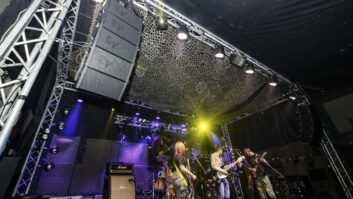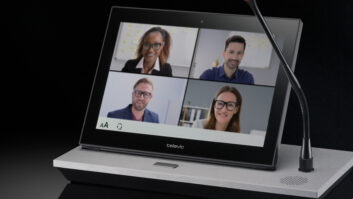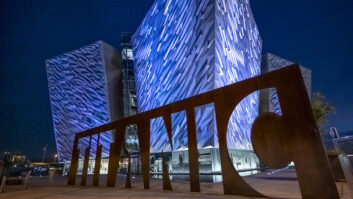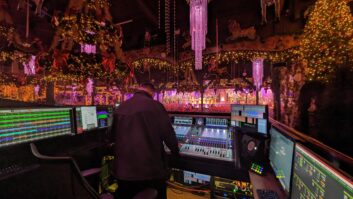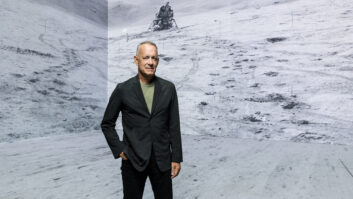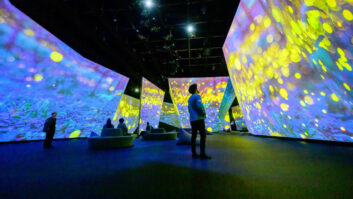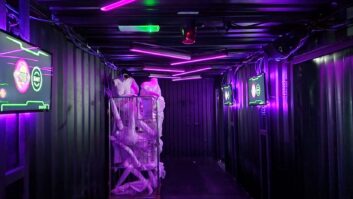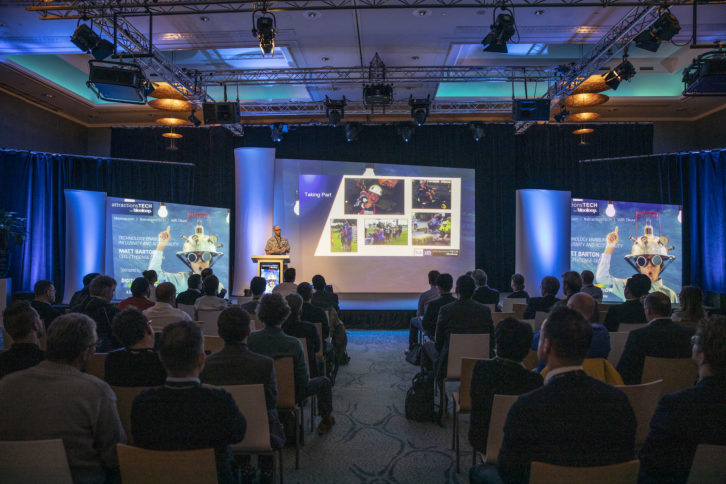
Integrating projection, AI, VR and shareable technologies into the next generation of theme park rides was the key focus at ISE’s attractionsTECH conference, which took place on the last day of the show in the Hotel Okura.
Theme park designer and chief executive of Teq4 and Immersivity Martin Howe opened the morning-long conference by throwing down the gauntlet for designers to integrate the guests themselves more fully into the experience.
“We are now entering the fourth industrial revolution, we have self-driving cars, and gene editing…so assimilate me – you know who I am, where I am, and what I like – integrate me,” he challenged.
Howe added that Galaxy’s Edge, Disney’s Star Wars themed area – due to open this summer in its US-based resorts – has led to several innovative partnerships. Howe, who added that he “could neither confirm or deny” that he’s been working on Star Wars project for the last four years” pointed to partnerships between firms such as NVIDIA and Epic Games.
This venture has led to the production of “ultra-high resolution, perfectly timed display technology” synchronising five projectors designed to place visitors in the cockpit of the Millennium Falcon, fully immersing them into world of planet Batuu.
Integrating AI into the theme park experience is something that manufacturers of interactive and media-based attractions are also exploring. Laurence Beckers, Creative Director at Alterface, told delegates that her company is working in collaboration with universities on developing “a smart intelligent system” that uses using AI and facial recognition to provide “the best story possible story for visitors.”
“AI can be useful to manage the flow of guests. Facial recognition, for example, will help us know the age and type of person and can help people who are lost… but [AI] will also be able to deduce what type of person they are – a leader or a follower – and incorporate this into an experience.”
She added that in the era of the smartphone and Ultra HD, guests now tend to have a very high level of expectation when it comes to quality. “How do you make them feel they are going inside the story? Can you use Deep Space 8K Screens? Can you use video mapping? Or VR? Can you integrate smartphones?
“Whatever it is you need to remember that people now want real-life resolution, they don’t want to see any pixels. This means using huge displays without borders or letterbox. It means playing around with video codecs that can achieve a high-level of compression.”
Fellow speaker Chris Lange, creative director of Mack Solutions – the in house creative and design department at Germany’s Europa Theme Park – shared some practical realities of integrating such technologies into an operating theme park.
His original vision for a 250m long 885sqm lazy river in the waterpark area was to feature shadows of 3D mermaids swimming in the waterfalls by integrating immersive media in the walls.
“The original idea was to install an overhead LED but the chlorine exposure proved problematic. And then comes the reality of construction – how to fit in the entire tech in such as tight space.
Lange decided to alter the concept – using projectors to have mermaids swimming beside guests rather than above them.
He added that the lead-time on this project was three years but the challenge has been to keep as up to date with the technology as possible. “This means that it’s important when you are designing the space to keep it as flexible as possible,” he added.
According to Lange, Europa is still to decide on the type of projectors it will use – either four small ones or one big laser projector – when the ride opens in November, and he’s still open to pitches.

